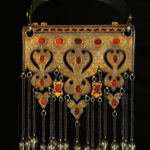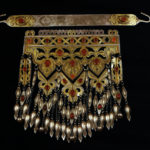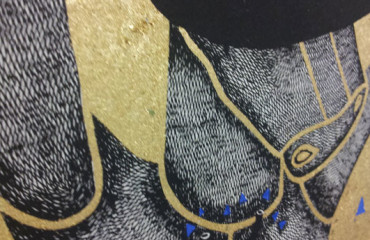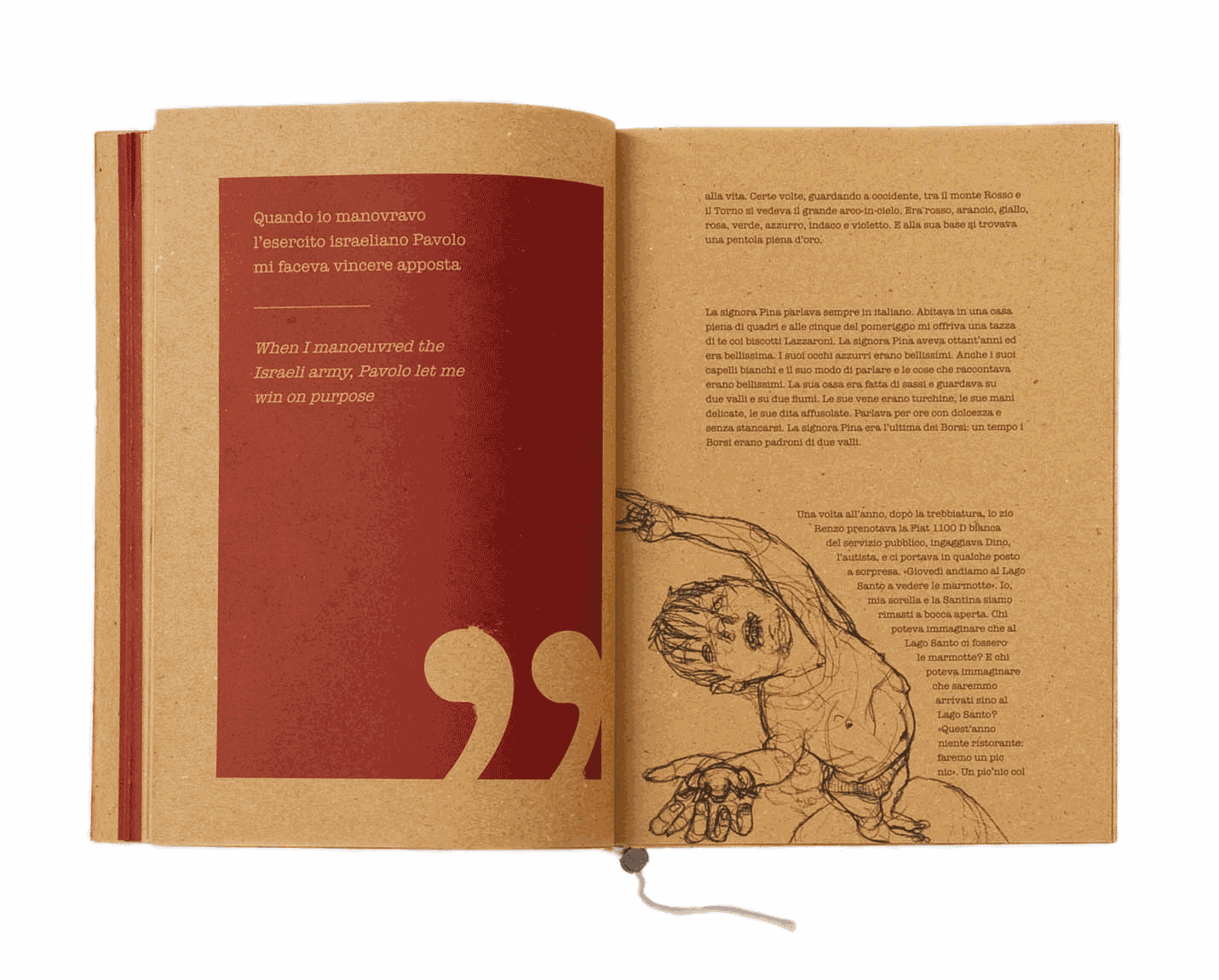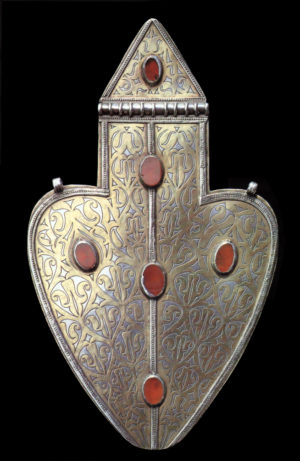
by Luana Cenci
In Central Asia, at the question about what is the best bride, they answers: “the one that cannot touch her toes for the abundance and the weight of her jewelry”. Descendants of the ancient Oghuz from Mongolia, the Turkmen groups were warmongering nomad opposed to the lords of the oasis, organized in groups ranging from a few families to thousands of tents and living in dwellings called yurts. The continuity of the clan and tribe was entrusted to women, custodian of culture and popular belief, they were the healers, and confronted themselves daily with the birth, illness and death.
The abundance of jewelry worn by women was justified, not so much from the sale of astrakhan sheep and knotted carpets, as by the immense wealth generated by human traffic. In the nineteenth century, in fact raids among villagers in Iran and in the territory of Kazakhstan fed the slave markets in Khiva and Bukhara. Of significant size and weight, jewels represented a significant financial investment. Women were in fact to pay a heavy tribute to war. They had to melt down a large number of their jewelry to pay war indemnity to the Russians at the time of the conquest in the late nineteenth century.
Women’s jewelry were not considered only as ornaments, but also as powerful talismans; their shape, the arrangement of the stones, the proportions, the composition and the decoration contained a magical significance. The choice of silver is not accidental. According to ancient beliefs, it has indeed healing and protective properties, while the semi-precious stones such as turquoise, coral and carnelian, would protect the owner from the evil eye. The carnelian was and remains the favorite stone, bright red (the color of life), believed to be bearer of abundance, happiness and peace to the home, it protects the wearer from diseases and death, creating indissoluble bonds between those who give it and those who receives it.
The decorative motifs are repositories of symbolic values of ancient origin, the most common images are ram’s horn (strength and virility), fish (fertility), birds associated with the sun who oppose snake. From early childhood to old age, women wore silver jewelry. Amulets, like silver bells and plaques molded in different shapes represented the first ornaments for small children and they were sewn on clothes to protect them from disease or bad luck.
The number of jewelry that a girl owned increased with the approach of marriageable age, and in the period between marriage and the birth of their first child, the amount worn every day was extraordinary. Once she confirmed her fertility, it began to decrease the amount of jewelry worn and received. There are various types of ornaments worn: articulated front tiaras for married women, complicated sets composed of several elements together to make hair and temples jewelry, collars and pectorals, bracelets and rings, amulets and small trinkets to wear sewn on clothes.
Women, more than men, have enriched the tribal mythology with elements from various sources. Always moving from one place to another, they brought with them their history that among rugged lands and vast, silent and wild deserts of grass, took the form of a myth.
Cover: Female braid’s adornments “Asyk”, XIX-XX cent., silver, gilding, carnelian, private collection.
 English
English  Italiano
Italiano 

